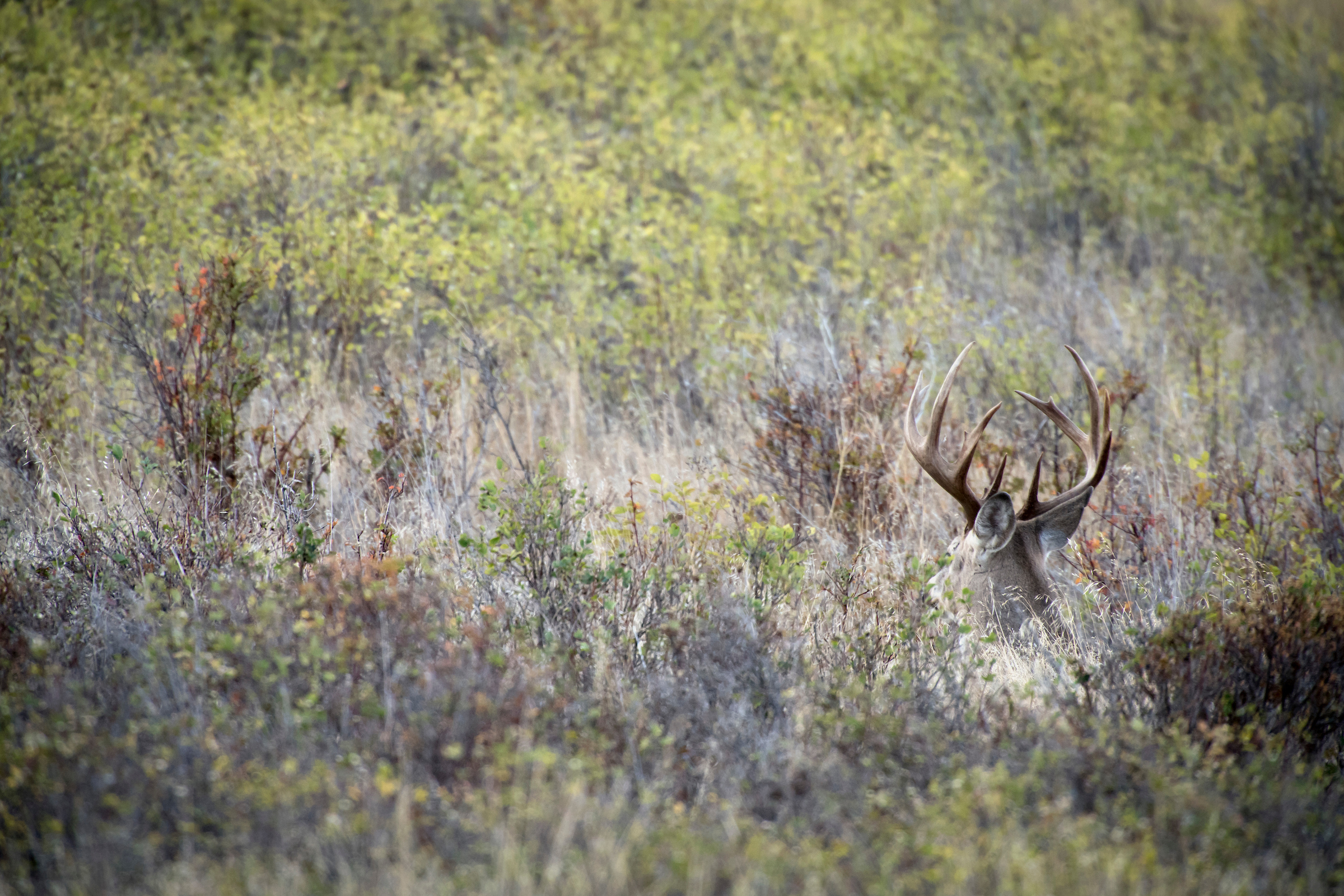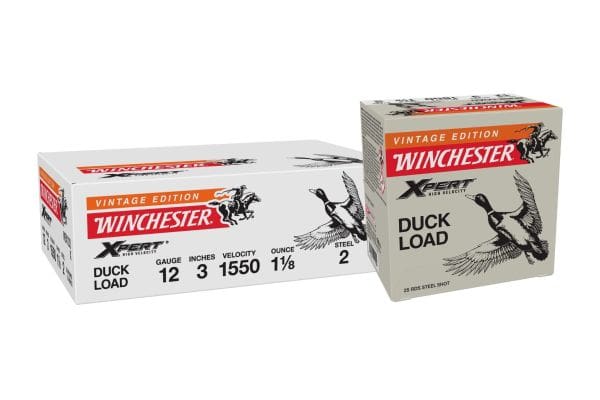A heavy-racked buck beds down for the day. Wind sweeping from behind, and eyes scanning down below, danger has little chance of finding him before he detects it. After all, that’s why the buck picked this spot in the first place.
If you scan articles on the best rut hunting spots, you won’t find many that highlight buck bedding areas as key locations to target. But often times in deer hunting, going against the grain can produce great results.
However, you can only hunt buck bedding areas well if you have a firm understanding of how bucks bed, where they bed, and how they learn to survive based on their bedding area choices.
If you are tired of hunting the same old rut stands with minimal success, consider a change. Hunting a buck bedding area during the rut could be your ticket to hanging an old bruiser on the wall. Here’s what you should know.
Defining Buck Bedding
Let’s start by agreeing on terms. Of course, bedding areas are places where deer rest and sleep. However, it’s important to know there are different types of bedding areas. Deer have daytime and nighttime bedding areas. For this article, we’ll focus on the daytime beds.
On the surface, it can be difficult to determine the difference between buck and doe bedding areas. There are distinctions, though.
Bucks tend to prioritize security over convenience. Does usually take the opposite approach. Bucks rely on themselves to detect danger (because they typically bed alone). However, does usually bed, feed, and travel within family units. When bedding together, does bed down facing different directions. This makes it easier to detect danger from all areas around them. Bucks can’t do this so they are much choosier in their bed locations.
Furthermore, bucks might or might not bed within the same patches of cover as does. When they do, bucks tend to take the best quality bedding. For example, in hill country, that might be the upper third of a ridge line. In swamps, that might be the highest dry ground available. In big woods, it could mean interiors of timber or in spots with the thickest cover and highest stem counts.
Bucks also bed in areas that offer plenty of horizontal cover. They might bed up against a boulder, log, or other object that hides their profile. Oftentimes, from a hunter’s perspective, all you might see is their head, antlers, and maybe the neck. Other times, you’ll see nothing at all (until it’s too late).
Regardless of the habitat type or geographical layout, bucks almost always bed with certain consistencies. For example, they tend to bed with the wind at their back. This allows them to smell anything upwind (behind them) and see anything downwind (in front).
This is one reason leeward ridges are so attractive to deer. The prevailing wind brings scent from over the top of the ridge. Early in the day, thermals bring scent up from below. Oftentimes, this allows deer to smell danger from multiple directions.
Without question, savvy bucks learn how to detect danger within their environment. With time, they learn typical directions that danger comes from. With that knowledge, they bed in areas that offer visibility to see hunters or predators coming from these directions. Therefore, don’t be surprised to see bucks bedding right on the edge of thick cover within some of the areas noted above. This gives them plenty of cover to hide and allows them to see danger approaching from the open areas nearby.
It’s logical to think that once bucks become confident in certain bedding areas, they’ll go back and use the same beds over and over. In some ways, and in many places, they do. It’s especially common for bucks that live in more desolate landscapes or areas with poorer habitat quality to reuse the same beds with higher frequency.
According to the MSU Deer Lab, in areas with higher timber-to-open ratios and bigger woods settings, bucks are less loyal to specific beds. They will still bed within the same relative geographic locations. However, the absolute locations of their beds tend to vary.
Read Next: How to Hunt Cover During the Rut, with Dr. Craig Harper
Know That Old Bucks Are Different
It’s been said many times, but older bucks operate completely differently than younger bucks and does. They take on vastly different habits and tendencies.
A common thread through most mature deer includes the desire for seclusion. Older bucks don’t want a bunch of other deer bedded close to them. Additionally, it’s important to recognize that higher populations of does, and higher deer densities in general, can cause bucks to bed on the fringes. That’s especially true outside of the rut.
Because of everything noted above, it’s challenging to hunt close to buck bedding. It becomes even harder when the deer is 4.5 years old or older. These deer have learned to survive in part due to their bedding area choices. Therefore, it takes strategic planning and very deliberate approaches to thread the needle and get a big buck on the ground.
So, Should You Hunt Buck Bedding During the Rut?
While it isn’t as popular as other rut-centric stand locations, it’s certainly an option. By continuing to focus on buck bedding areas (similar to early season and pre-rut plans), hunters can find a big ol’ buck.
By digging through deer research and personal experience, it’s clear that bucks express unique habits and tendencies that culminate into perceived personalities. One example is a really old buck that barely participates in the rut. That’s the exception, of course, but it would call for a unique approach. You would have to hunt such a deer as if the rut isn’t even on. You’d focus on travel routes along bed-to-feed patterns.
Some mature bucks that participate in the rut still return to their preferred bedding areas. If they don’t find an estrus doe under cover of darkness, by dawn, they cautiously slink back to one of the advantageous beds they know. When hunting this type of deer, set up between his bed and nearby food sources. Or between his bed and nearby doe bedding.
Hunting this deer is similar to hunting the fringes of buck bedding outside of the rut. Use good entry and exit strategies, and keep wind directions in mind during the approach, hunt, and departure. Don’t be aggressive with calling, rattling, or decoying since reclusive bucks rarely respond well to those aggressive tactics.
Final Thoughts on Hunting Buck Bedding Areas During the Rut
Hunting buck bedding requires a lot of planning and consideration. Hunting buck bedding during the rut requires even more. In many cases, this isn’t the right play.
Oftentimes, it’s less-dominant, uber-mature deer (5 ½-plus), or specific bucks that tend to be more reclusive across their entire lifespan, that require this hunting tactic.
Once you’ve determined you’re hunting a specific buck like this, you must hunt him carefully. Use the hunting strategies you’d typically use to hunt a whitetail bedding area with the immediacy of the rut in the front of your mind.
Read the full article here





